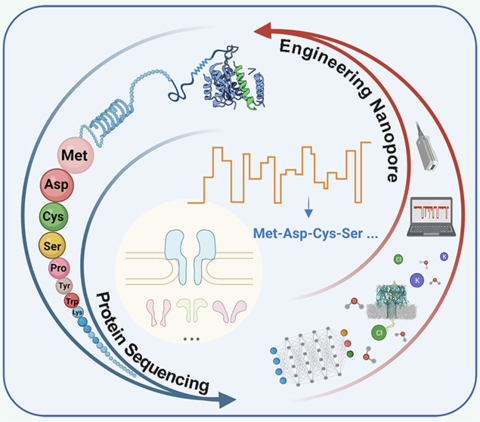Engineering Biological Nanopore Approaches toward Protein Sequencing

Biotechnological innovations have vastly improved the capacity to perform large-scale protein studies, while the methods we have for identifying and quantifying individual proteins are still inadequate to perform protein sequencing at the single-molecule level. Nanopore-inspired systems devoted to understanding how single molecules behave have been extensively developed for applications in genome sequencing. These nanopore systems are emerging as prominent tools for protein identification, detection, and analysis, suggesting realistic prospects for novel protein sequencing. This review summarizes recent advances in biological nanopore sensors toward protein sequencing, from the identification of individual amino acids to the controlled translocation of peptides and proteins, with attention focused on device and algorithm development and the delineation of molecular mechanisms with the aid of simulations. Specifically, the review aims to offer recommendations for the advancement of nanopore-based protein sequencing from an engineering perspective, highlighting the need for collaborative efforts across multiple disciplines. These efforts should include chemical conjugation, protein engineering, molecular simulation, machine-learning-assisted identification, and electronic device fabrication to enable practical implementation in real-world scenarios.